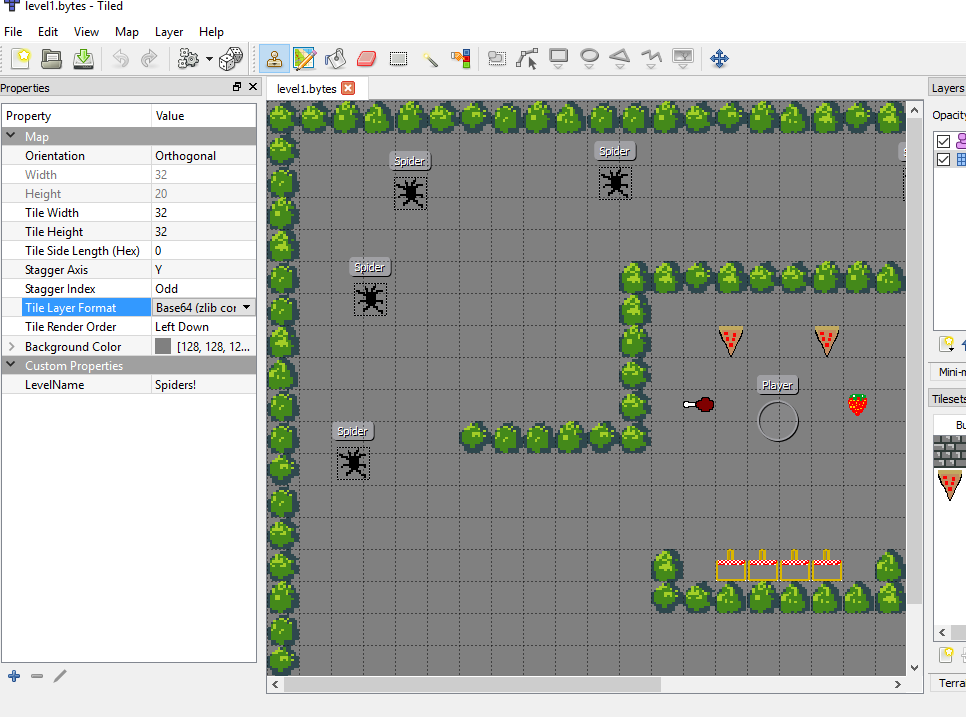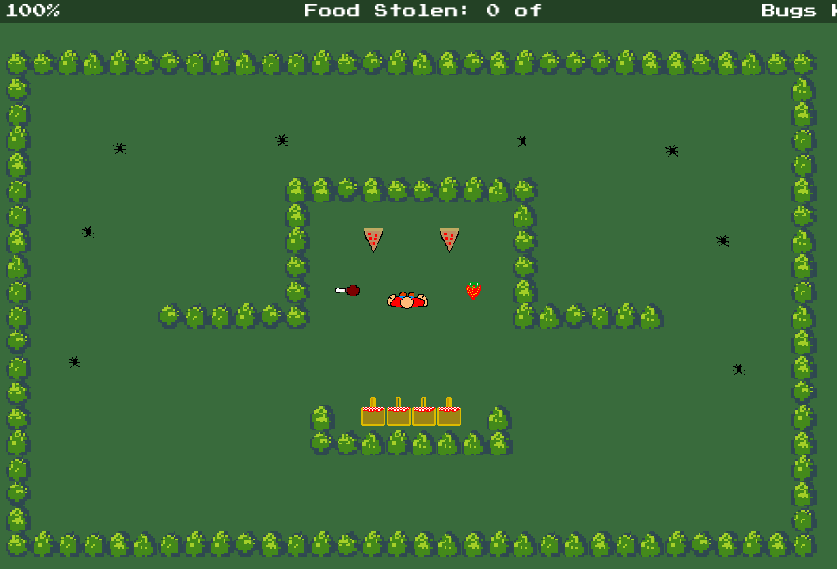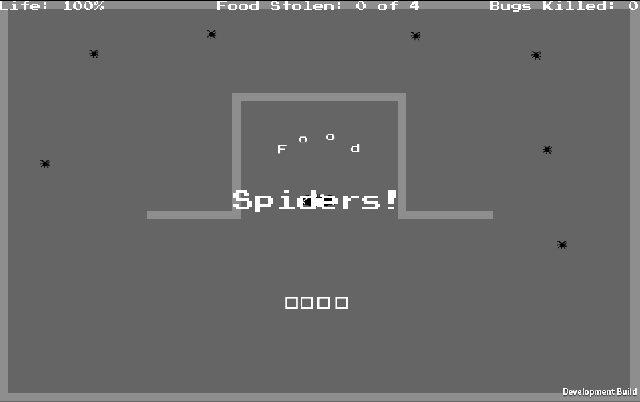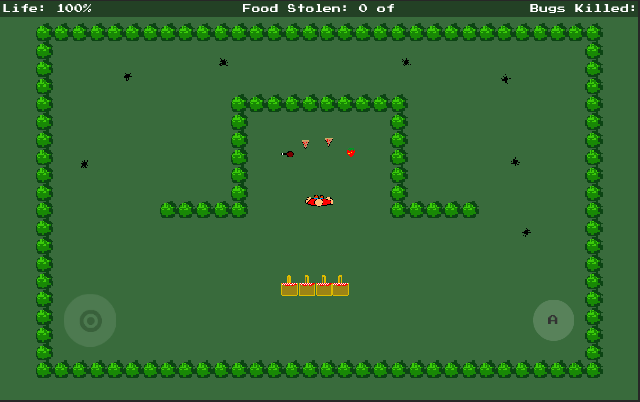It’s been over a week since my last update and according to my rules I’m supposed to do at least one of these per week. Since my last update I have:
- Improved/refactored a bunch of my Tiled map importer code
- Converted all my levels (there’s only 11 so far) over to the TMX map format
- Added a more interesting end of level dialog that shows bugs killed and all the food you kept safe
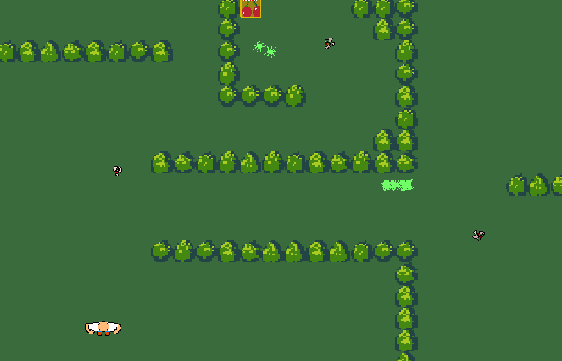
- Made changes/improvements to the virtual joystick controls for mobile
- Refactored some of my UI code into what I think is a pretty good re-usable mobile dialog class for Unity’s UI
- Made many changes to my core Unity3d library code
- Many bug fixes
- Installed El Capitan and the newest XCode on my MAC mini
- Got all my expired iOS certificates and other assorted Apple obstacles cleaned up
- Got a build of the game up and running on an iPhone
- Ripped out the Ludum Dare quality “sound system” script stuff and integrated Audio Toolkit into the project
- Found a nice SerializableDictionary implementation complete with a property drawer from spacepuppy’s Unity framework
- Found a great free 32×32 outdoor tileset and spent far too much time slicing and dicing it into something I’m not even sure I’ll be able to use.
- Went off on a tangent and updated my Paint .NET animation plugin with a UI redesign and another option for outputting an animation strip. I haven’t officially released the changes yet.
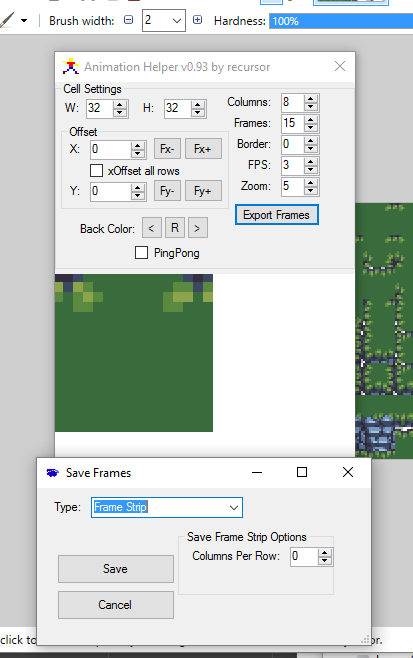
Things I still need to get done:
- Redo any sound effects I don’t like, make new ones for some stuff that doesn’t have a sound
- Do something with the current little musical pieces. Throw them out, redo them, or something. I’m not quite sure what to do about this one yet.
- I think I want to implement some sort of scoring system that gives you points for bugs killed and some sort of bonus multiplier for each piece of food you get into a basket before the level is completed.
- I’ve been thinking about letting the player poison food so that when bugs (except for roaches) try to pick it up, they get poisoned and die. This should impose some sort of tradeoff for the player i.e. the player looses a bonus multiplier or pays some points to do this because he is essentially ruining a piece of the food he is trying to protect
- Make the player’s health persist between levels
- Add something to let the player heal
- I think I would like a high score list. I though about using Google’s Play Games Plugin for Unity but it doesn’t work for PC/Mac/Linux. I want to have something like dreamlo’s free leaderboard but running on my own server. I wonder if I have time to implement it…
